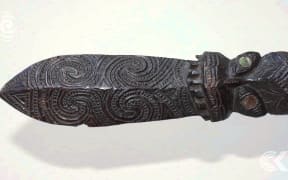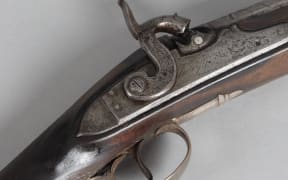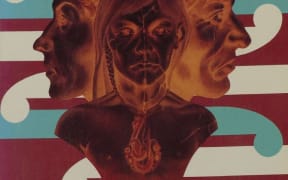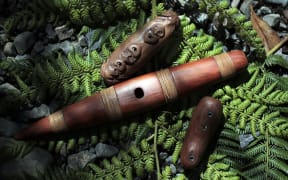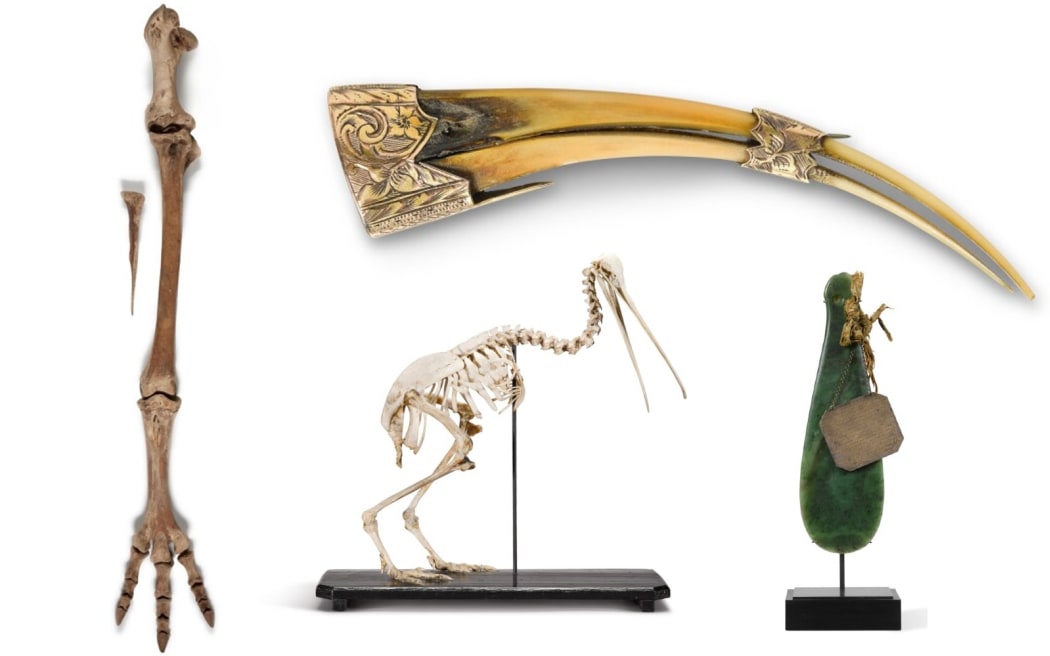
Various New Zealand artefacts on sale at an upcoming Sotheby's auction. Photo: Sotheby's / Supplied
A collection of 19th century - and older - New Zealand artefacts being auctioned internationally is raising questions about whether they are ethical to buy and sell.
The items, listed by renowned auction house Sotheby's, include moa leg bones, a golden huia beak brooch, a kiwi skeleton, a taxidermied bird, and a patu and mere - two types of Māori clubs.
Mike Dickison, former curator of Whanganui Regional Museum, said it was not unusual for items like these to be sold overseas, but it was sad the sellers did not seem to know the context of most of the artefacts. For example, the Huia beak brooch was from Whanganui, he said.
"A founder of our museum, Samuel Drew, was a jeweller and natural history expert and taxidermist - probably the only person in Whanganui who'd be taking natural history objects and making jewellery out of them.
"So if they'd bothered to do any research, they probably could have found some context and perhaps even returned it to the area."
One of the few items listed with some background information was a greenstone mere, or short club. The description said it was given by Ngāti Whātua chief Pāora Tuhaere to Admiral Tryon in 1885, after a boat race. The chief's only request was that the taonga be kept in the admiral's family.
"Pāora then handed over the ancestral mere to Admiral Tryon, who in suitable terms acknowledged the compliment, and said that he would value the gift as coming from a chief who had always been conspicuous for his loyalty," the description read.
'Dearly love to have all of the taonga'
Ngāti Whātua Ōrākei Trust deputy chair Ngārimu Blair said the iwi didn't know of the mere's existence until it was listed online, but it would be wonderful to have the taonga returned.
His great-great-great grandfather carved the waka Tāhere Tikitiki, unnamed in the auction description, which was raced against the British boats.
But Blair said he could understand how the item had become less relevant to its current owner generations after it was gifted.
"Particularly from cultures that are not of ours," he said. "Obviously we'd dearly love to have all of the taonga we see in the photos that they're wearing, kākahu and korowai... all sorts of taonga that are no longer with us.
"There's a few thousand of us who are still around, and every morsel of our past and history we hear or read about or see in a painting or a sketch, it means a lot to the identity of this generation."
Legal loopholes
There were some regulations in New Zealand around the sale of artefacts, Dickison said, but these did not apply internationally.
"You couldn't trade bits of kiwi for example - you'd be in breach of the Wildlife Act and need a permit to hold parts of native species," he said. "Antiquities would also be restricted from export."
There is a gap in legislation regarding the sale of extinct animal parts, which are not covered by the Wildlife Act. A group of museum curators had been lobbying the government to tighten regulations for about six years, Dickison said, but a decision was still yet to be made.
In the interim, hundreds of moa bones had been sold online by people who took them from caves or swamps and then pretended they were ancient family artefacts, he said.
"I know politics moves slowly, but it would be really nice to try and sort this out," Dickison said.
"In an extinct species, really there should be some restrictions on the sale because there's no way you can ever get any more."

